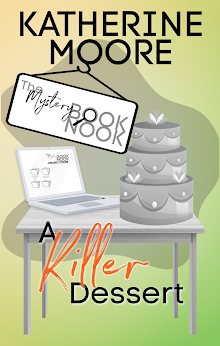 I was saddened to hear that Ned Vizzini killed himself this week after living with depression for more than half his life. He was the author of, among other books, a novel about his struggle with darkness. It's a book that promised a great career as a writer. But in the end his darkness swallowed him whole. Here's the review I wrote at the time.
I was saddened to hear that Ned Vizzini killed himself this week after living with depression for more than half his life. He was the author of, among other books, a novel about his struggle with darkness. It's a book that promised a great career as a writer. But in the end his darkness swallowed him whole. Here's the review I wrote at the time.
In Ned Vizzini’s quasi-autobiographical novel, It's Kind of a Funny Story, ateenage boy
struggles with clinical depression and finally realizes he might be able to
conquer it one day at a time.
The trouble starts when CRAIG GILNER applies to a tough
private school in Brooklyn. He spends
most of a year studying for the entrance exam and taking private lessons and
undergoing prep exams. When he isn’t
studying, he’s hanging with his friend AARON, who also wants to get into
EXECUTIVE PRE-PROFESSIONAL HIGH SCHOOL.
Aaron is a lot more laid back than Craig about the whole thing. He spends most of his time smoking pot and
having sex with his girlfriend NIA.
(Craig covets Nia in the worst way and when Aaron tells him about
feeling the inside of her “pussy” and tells him it feels like the inside of a
cheek, Craig nearly goes wild.)
Always sensitive, Craig gets clinically depressed after he
gets into the school. His parents (mom
designs postcards, dad’s in health insurance) are very concerned and send him
off to a psycho-pharmacologist named DR. BARNEY. He puts Craig on Zoloft and refers him to a
psychotherapist. It takes a few sessions
to find a good fit for him, but Craig really likes DR. MINERVA. And that’s when
Craig’s problems really begin.
There’s an urgency and a freshness to this novel that marks
the author as a real talent. This is not
the usual coming of age story. It is,
instead, a character study. Craig is
just a normal kid until his depression and anxiety spin out of control and he
succumbs to the pain of it all. Every
step along the downward spiral feels completely real and plausible, as does the
ambiguous ending. (Craig is all right,
for the time being, and hopeful that he will only get better with time.)
The characters here are not always developed to their
fullest, but the author has a knack for giving us the detail that will make
them come alive. Craig’s mom shows up at
the hospital toting the family dog, much to everyone’s dismay. When she hugs Craig, the dog is in between
them and growls. (It does not go
unnoticed by Craig that the dog began barking at him when he his depression
began to take hold.)
Nia, the girl of Craig’s dreams, proves to be a superficial
sort long before Craig realizes it.
She’s a tease and not really worth all the energy he pours into loving
her. (His friend Noelle speaks for most
readers when she tells Craig that Nia is a slut.)
The various patients on the adult ward are a mixed bag. The writer does a good job of making these
damaged people come alive. It is perhaps
too on the nose that Noelle is a survivor of a suicide attempt brought on by
sexual abuse. Bobby and Tommy and Humble
are actually pretty funny in their roles as drug burn-outs (what Bobby calls
being a “garbage-head”) and they’re as close to the voice of reason as he’s
going to find.
The doctors are uniformly sympathetic. (This is not a ONE FLEW OVER THE CUCKOO’S
NEST situation, although everyone kind of hopes that it might be—at least among
Craig’s posse.) One doctor in particular
has a special knack for getting to the bottom of what’s bothering Craig and
offering solutions. (Solutions are
ANCHORS in Craig’s parlance, just as drawing the maps is a way for him to stay
grounded.)
We like Craig and really wish him well. The descriptions of how he is affected by
depression and anxiety get to us on a completely visceral and emotional
level. (The author slips in some
statistics on how many people in the US have depression or other anxiety
disorders, and the figures are high enough to pretty much include everyone in
the depression continuum.)
The problem with the book as a whole is that it gives us a
backdrop and it gives us lots of characters, but it doesn’t really give us a
story. Unlike, say, ORDINARY PEOPLE,
where there was a beginning, middle and end to the boy’s tale.
This well-crafted novel is as real as it gets, a story told
without self-pity and with large dollops of humor. Once you've read it, you won't be tempted to tell a depressed friend to "cheer up." Because it's just not that easy.
I never saw the movie based on this book. Did anyone?
I never saw the movie based on this book. Did anyone?






No comments:
Post a Comment